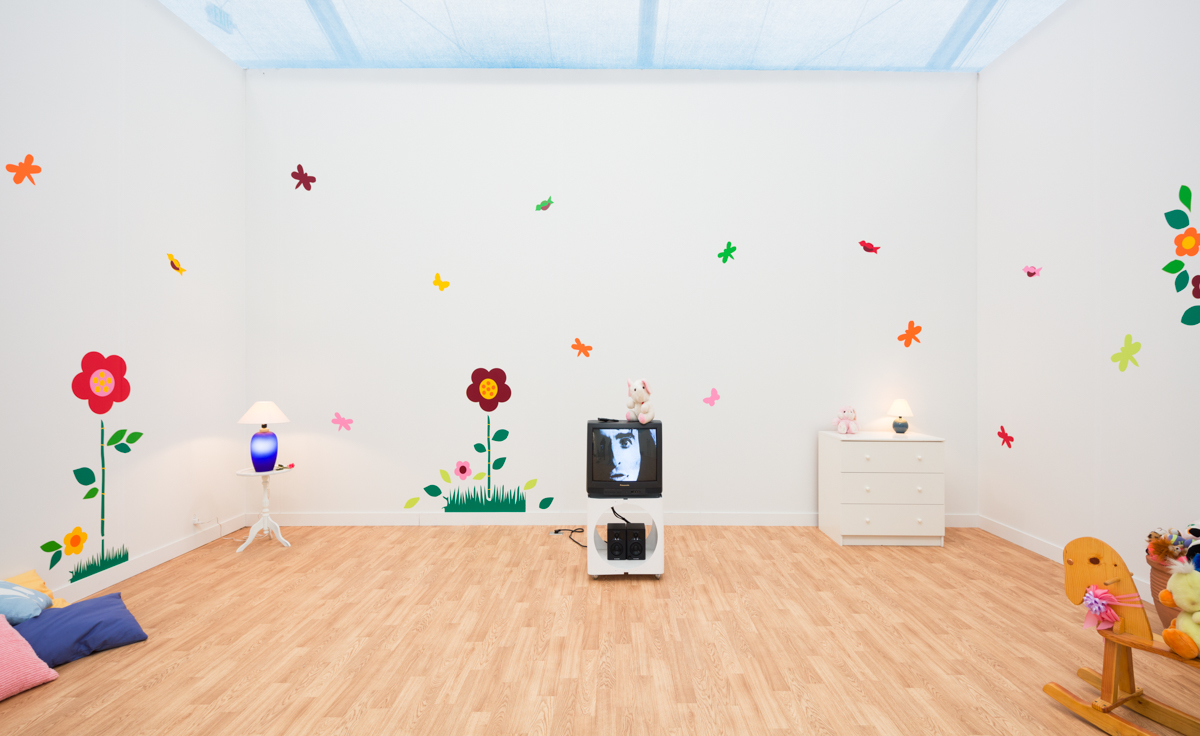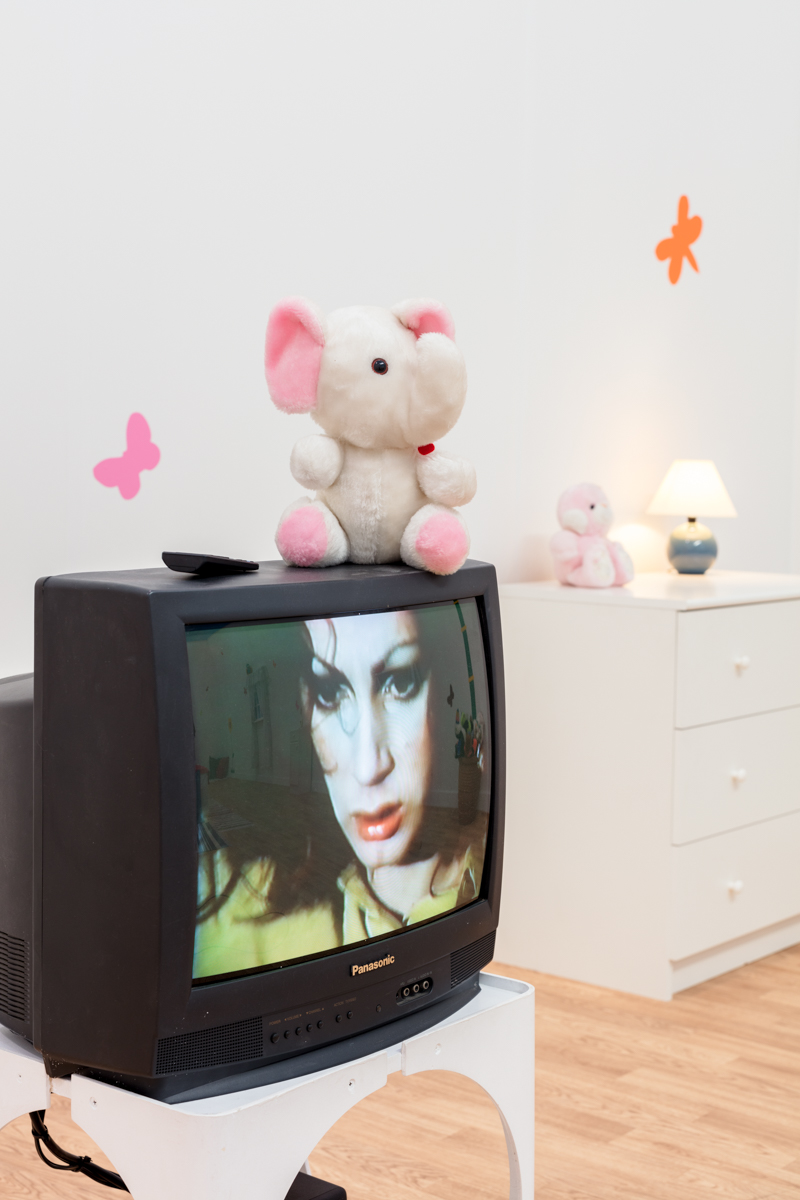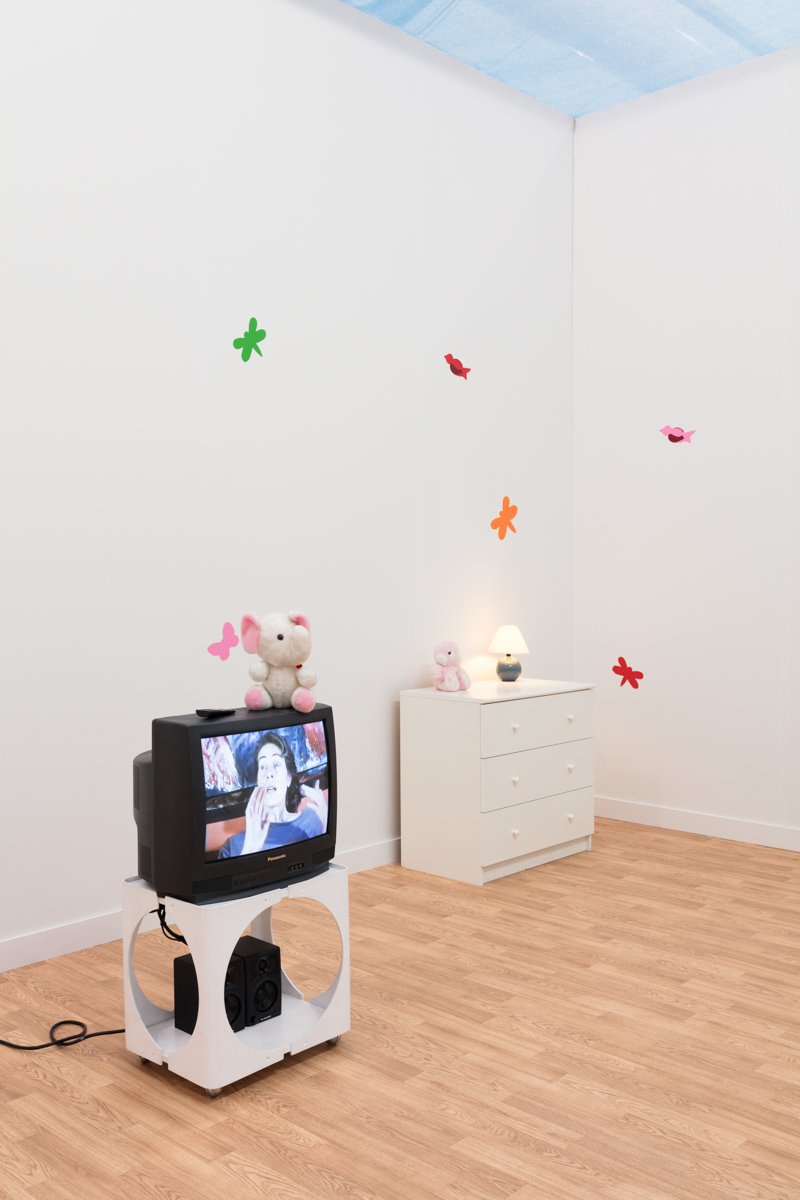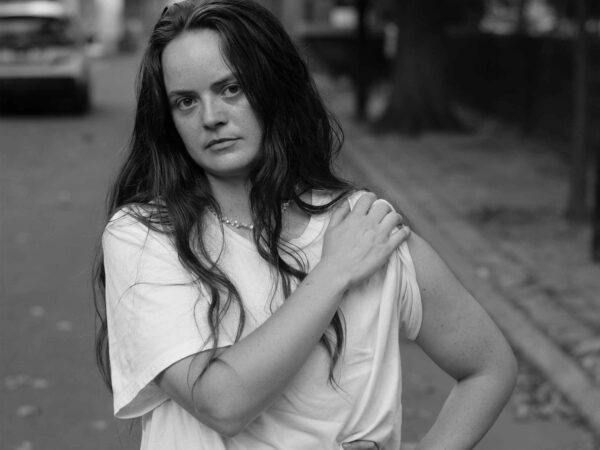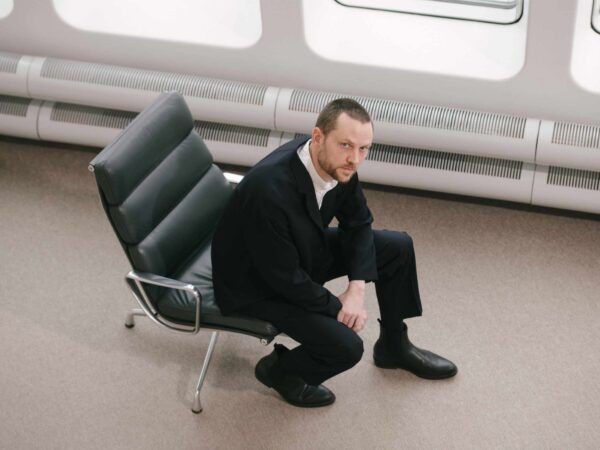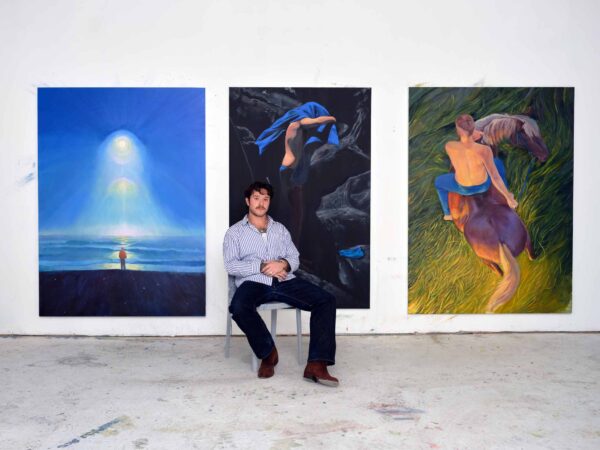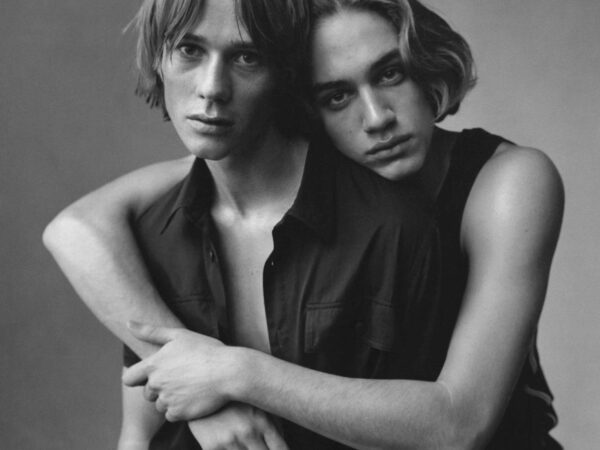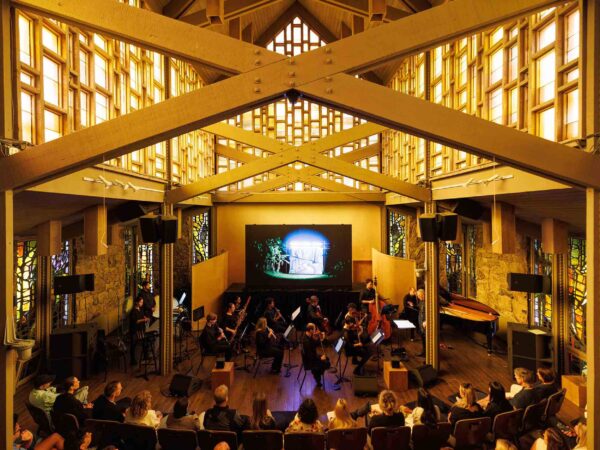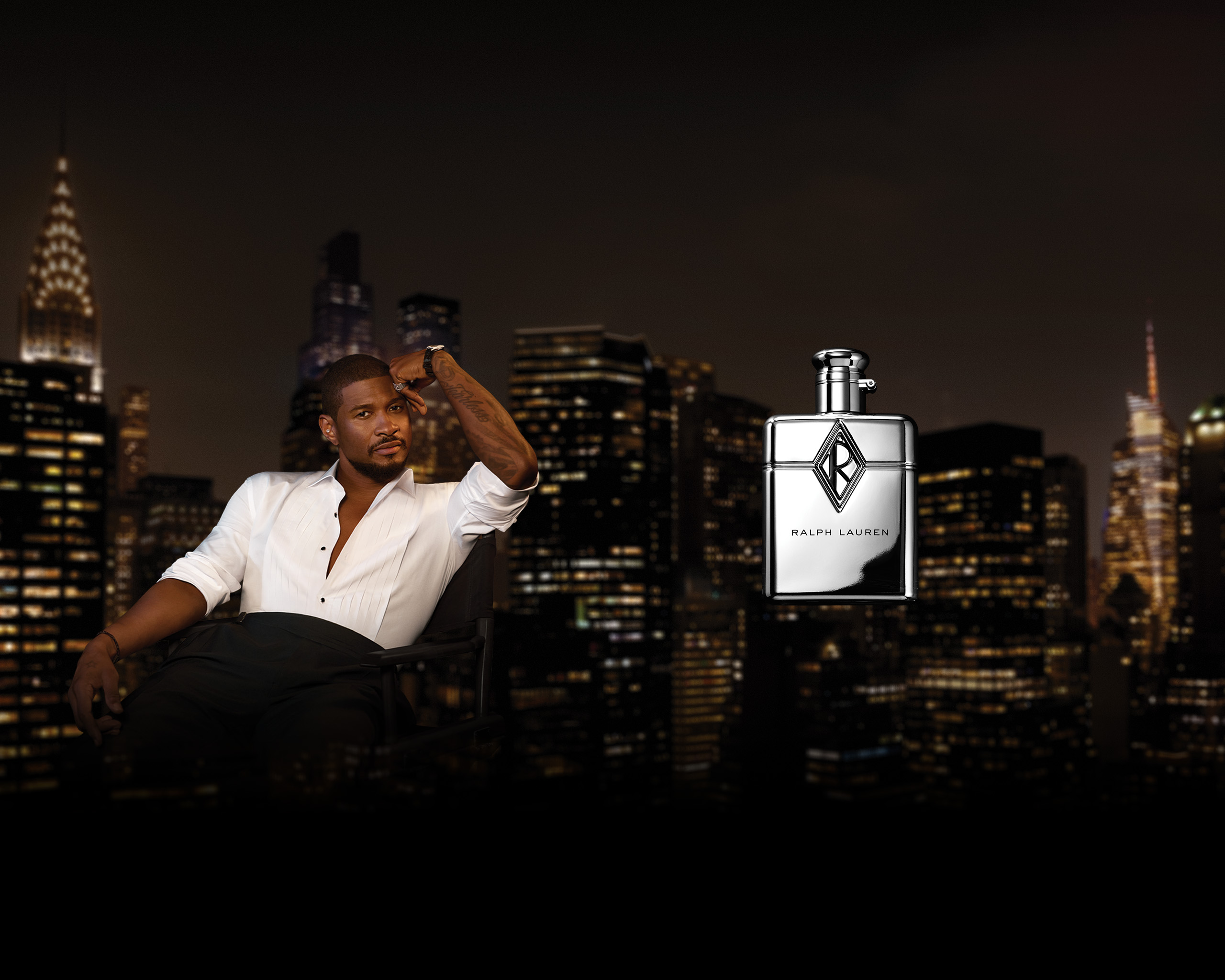Mike Kelley's 'Unisex Love Nest,' which was recently shown in his adopted town for the first time, still resonates 20 years after its debut.
“I didn’t feel connected in any way to my family, to my country, or to reality for that matter: the world seemed to me a media facade, and all history a fiction—a pack of lies. I was experiencing, I think, what has come to be known as the postmodern condition, a form of alienation quite different from postwar existentialism because it lacks any historical sense—there is no notion of a truth that has been lost.”
—Mike Kelley in his 1999 paper “Cross Gender / Cross Genre”
In 1999 Mike Kelley—the Michigan-born, Los Angeles-based artist who committed suicide in 2012— presented the paper “Cross Gender / Cross Genre” in Graz, Austria, as part of the Steirischer Herbst festival. Titled, “Re-Make/Re-Model: Secret Histories of Art, Pop, Life and the Avant-garde,” the festival’s theme was centered around the politics of queer aesthetics. To accompany the paper, the artist presented a video installation, titled Unisex Love Nest, at the Palais Attems in Graz. The film included clips of cross-gender-related films and documentation, and interviews with some of the artists, set against the backdrop of an idealized children’s bedroom.
Above The Fold

Sam Contis Studies Male Seclusion

Slava Mogutin: “I Transgress, Therefore I Am”

The Present Past: Backstage New York Fashion Week Men’s Spring/Summer 2018

Pierre Bergé Has Died At 86

Falls the Shadow: Maria Grazia Chiuri Designs for Works & Process

An Olfactory Memory Inspires Jason Wu’s First Fragrance

Brave New Wonders: A Preview of the Inaugural Edition of “Close”

Georgia Hilmer’s Fashion Month, Part One

Modelogue: Georgia Hilmer’s Fashion Month, Part Two

Surf League by Thom Browne

Nick Hornby: Grand Narratives and Little Anecdotes

The New Helmut

Designer Turned Artist Jean-Charles de Castelbajac is the Pope of Pop

Splendid Reverie: Backstage Paris Haute Couture Fall/Winter 2017

Tom Burr Cultivates Space at Marcel Breuer’s Pirelli Tire Building

Ludovic de Saint Sernin Debuts Eponymous Collection in Paris

Peaceful Sedition: Backstage Paris Fashion Week Men’s Spring/Summer 2018
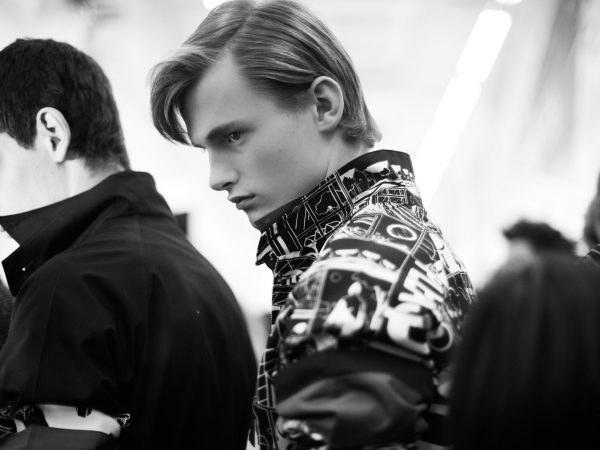
Ephemeral Relief: Backstage Milan Fashion Week Men’s Spring/Summer 2018

Olivier Saillard Challenges the Concept of a Museum

“Not Yours”: A New Film by Document and Diane Russo

Introducing: Kozaburo, 2017 LVMH Prize Finalist

Introducing: Marine Serre, 2017 LVMH Prize Finalist

Conscious Skin

Escapism Revived: Backstage London Fashion Week Men’s Spring/Summer 2018

Introducing: Cecilie Bahnsen, 2017 LVMH Prize Finalist

Introducing: Ambush, 2017 LVMH Prize Finalist

New Artifacts

Introducing: Nabil Nayal, 2017 LVMH Prize Finalist

Bringing the House Down

Introducing: Molly Goddard, 2017 LVMH Prize Finalist

Introducing: Atlein, 2017 LVMH Prize Finalist

Introducing: Jahnkoy, 2017 LVMH Prize Finalist

LVMH’s Final Eight

Escaping Reality: A Tour Through the 57th Venice Biennale with Patrik Ervell

Adorned and Subverted: Backstage MB Fashion Week Tbilisi Autumn/Winter 2017

The Geometry of Sound

Klaus Biesenbach Uncovers Papo Colo’s Artistic Legacy in Puerto Rico’s Rainforest

Westward Bound: Backstage Dior Resort 2018

Artist Francesco Vezzoli Uncovers the Radical Images of Lisetta Carmi with MoMA’s Roxana Marcoci

A Weekend in Berlin

Centered Rhyme by Elaine Lustig Cohen and Hermès

How to Proceed: “fashion after Fashion”

Robin Broadbent’s Inanimate Portraits

“Speak Easy”

Revelations of Truth

Re-Realizing the American Dream

Tomihiro Kono’s Hair Sculpting Process

The Art of Craft in the 21st Century

Strength and Rebellion: Backstage Seoul Fashion Week Autumn/Winter 2017

Decorative Growth

The Faces of London

Document Turns Five
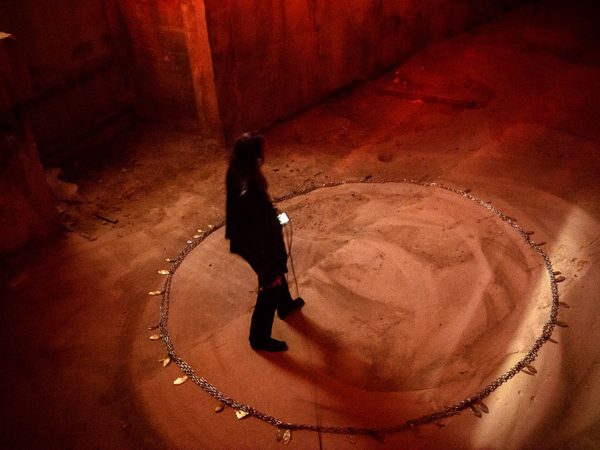
Synthesized Chaos: “Scholomance” by Nico Vascellari

A Whole New World for Janette Beckman

New Ceremony: Backstage Paris Fashion Week Autumn/Winter 2017
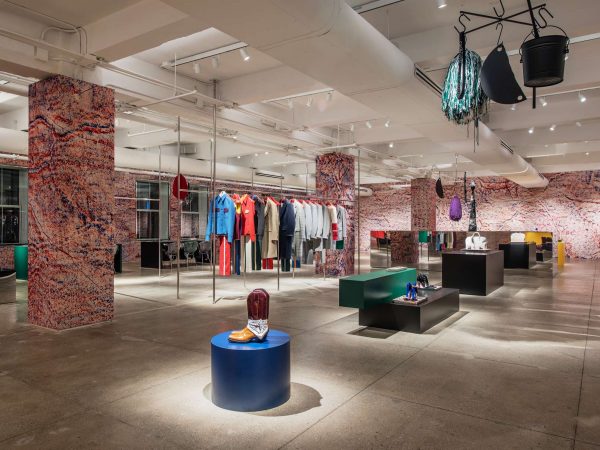
New Perspectives on an American Classic

Realized Attraction: Backstage Milan Fashion Week Autumn/Winter 2017

Dematerialization: “Escape Attempts” at Shulamit Nazarian

“XOXO” by Jesse Mockrin

Brilliant Light: Backstage London Fashion Week Autumn/Winter 2017

The Form Challenged: Backstage New York Fashion Week Autumn/Winter 2017

Art for Tomorrow: Istanbul’74 Crafts Postcards for Project Lift

Inspiration & Progress

Paskal’s Theory of Design

On the Road

In Taiwan, American Designer Daniel DuGoff Finds Revelation

The Kit To Fixing Fashion

The Game Has Changed: Backstage New York Fashion Week Men’s Autumn/Winter 2017

Class is in Session: Andres Serrano at The School

Forma Originale: Burberry Previews February 2017

“Theoria”

Wearing Wanderlust: Waris Ahluwalia x The Kooples

Approaching Splendor: Backstage Paris Haute Couture Spring/Summer 2017

In Florence, History Returns Onstage

An Island Aesthetic: Loewe Travels to Ibiza

Wilfried Lantoine Takes His Collection to the Dancefloor

A Return To Form: Backstage New York Fashion Week Spring/Summer 2018

20 Years of Jeremy Scott

Offline in Cuba

Distortion of the Everyday at Faustine Steinmetz

Archetypes Redefined: Backstage London Fashion Week Spring/Summer 2018

Spring/Summer 2018 Through the Lens of Designer Erdem Moralıoğlu

A Week of Icons: Backstage Milan Fashion Week Spring/Summer 2018

Toasting the New Edition of Document

Embodying Rick Owens

Prada Channels the Wonder Women Illustrators of the 1940s
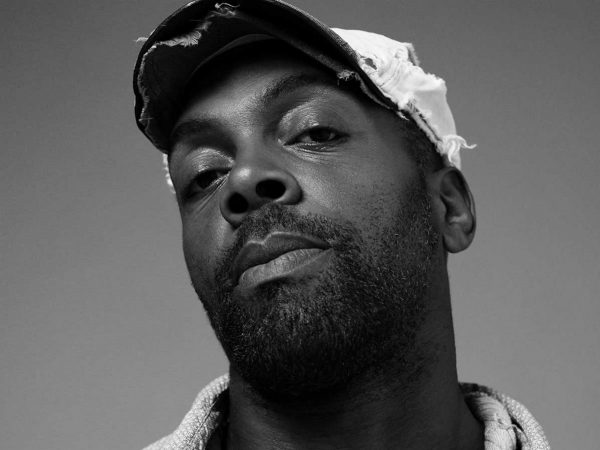
Andre Walker’s Collection 30 Years in the Making

Fallen From Grace, An Exclusive Look at Item Idem’s “NUII”

Breaking the System: Backstage Paris Fashion Week Men’s Autumn/Winter 2017

A Modern Manufactory at Mykita Studio

A Wanted Gleam: Backstage Milan Fashion Week Men’s Autumn/Winter 2017

Fashion’s Next, Cottweiler and Gabriela Hearst Take International Woolmark Prize

Beauty in Disorder: Backstage London Fashion Week Men’s Autumn/Winter 2017

“Dior by Mats Gustafson”

Prada’s Power

George Michael’s Epochal Supermodel Lip Sync

The Search for the Spirit of Miss General Idea

A Trace of the Real

Wear and Sniff

Underwater, Doug Aitken Returns to the Real
Kelley channeled his own rebellion in the installation, which has been shown primarily in Europe, where it was last viewed at the Sammlung Goetz in Munich in 2009. After a decade of being in a private collection, Hauser & Wirth showed the work in Kelley’s adopted hometown during the inaugural edition of Frieze Los Angeles from February 15 to February 17, where it sold for $1.8 million. Kelley’s misfit aesthetic may have attracted the eyes of a new consumer last fall, due to a collaboration with Supreme, and the sale shows that his market is still strong in the art world.
“They’re only young once, so take this opportunity to give them a room they’ll remember forever,” reads an ad from a 1999 issue of the magazine First for Women. The ad caught Kelley’s eye, and became the starting point for “Unisex Love Nest,” where he captured the innocence of the early years of childhood, and the idealized cheerfulness with which parents wish to shield their kids, by sticking bright floral decals to the walls, accenting the room with cheerful yellow pillows and a wooden rocking horse with a yellow stuffed duck toy sitting on it. A television stands in front of the bed, displaying Kelley’s film, a dark contrast that depicts a creative reality that happens beyond childhood.
“The set is a little girl’s room that comes from a women’s magazine, and Mike uses that as a kind of adolescent idea of a very static idea gender, and it’s got that video in the middle of it that is really talking about those kinds of polarities, and I think that’s reflective of his practice, which was very fluid, really moving between genres, and taking ideas of performing personas,” said Mary Clare Stevens, the executive director of the Mike Kelley Foundation for the Arts.
Kelley, although straight, connects his own feelings of alienation and angst to that felt within the gay community.
“It really looks at the history, it’s personal, it’s bioagraphical. Mike openly talks about his influences in the ‘60s, when he came up, and his generation of artists, and it tracks a history of cross dressing—this is all from Mike’s point of view—and the musical counterpart to that. He ties them together, so he goes from looking at the psychadelic hippie counterculture in the ‘60s, to a sort of a shift in the ‘70s, to glam rock, and then eventually to punk rock, and he also talks about a very specific history of the use of cross dressing as a transgressive performative action, so he talks about very infamous or famous groups, like the Cockettes, who were a group of male and some female performers in the mid to late ‘60s in San Francisco who crossed dressed,” explained Stevens.
In the paper, and the accompanying film, Kelley dissects the roles and origins of camp,
“the other,” homosexuality, and cross dressing, touching upon cultural icons like John Waters, who he credited with “‘celebrating queerness’ for its abject nature relative to dominant American society,” and comments on Mick Jagger’s stage movements being “‘black’ and ‘gay,’ which made him twice evil—and doubly sexualized—in the eyes of his teenybopper fans.”
“The piece is very important because it’s discussing these issues in a sort of fluidity in terms of identity, and I think Mike is tying that to himself and his own artistic practice,” said Stevens.


